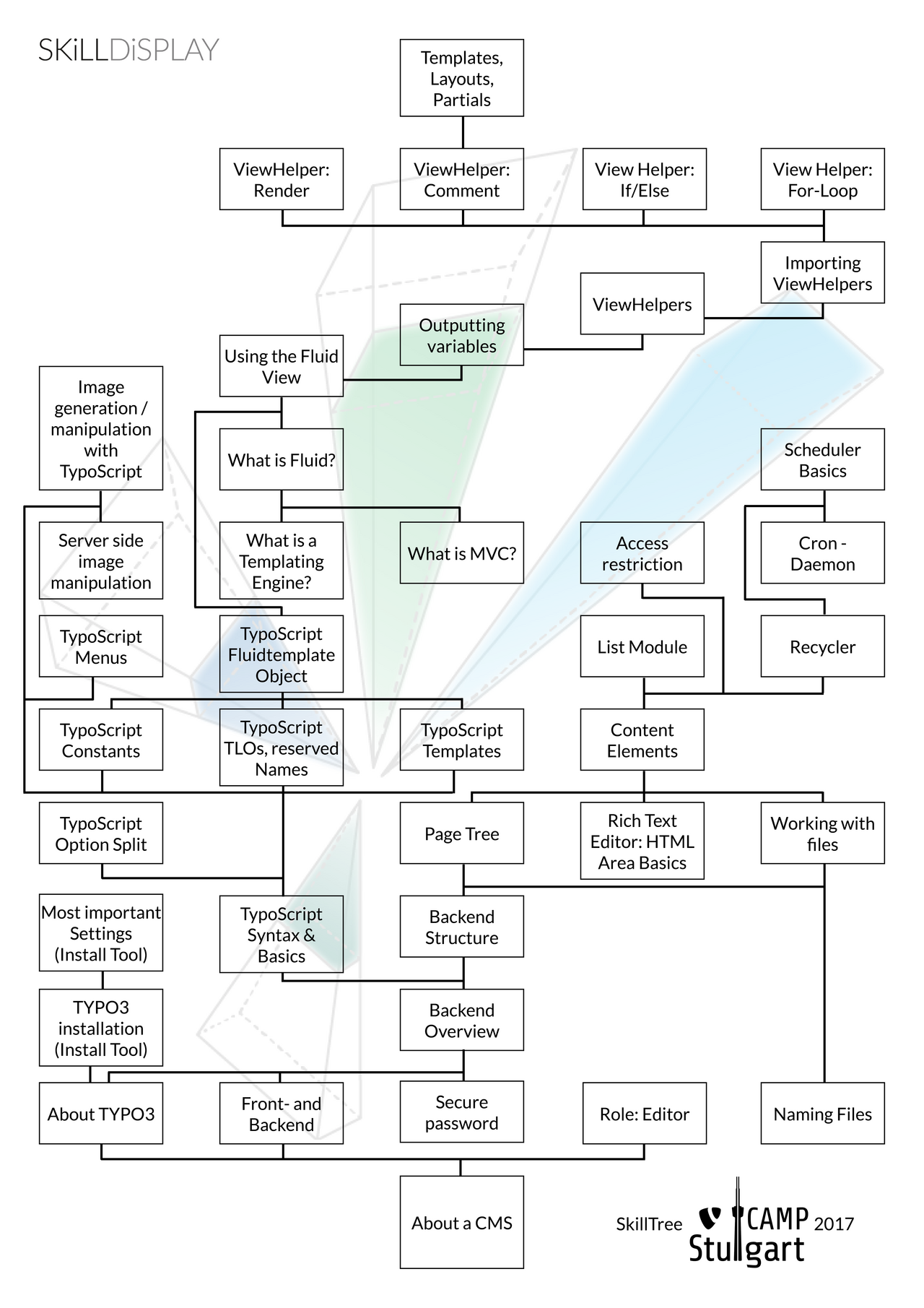
SkillDisplay - How to Learn New TYPO3 Skills
Thanks to Christina from SkillDisplay for sharing!
This blogpost is all about learning. And as everyone knows, the best things about learning are the study breaks. Wait, no! Breaks are necessary, but learning is exciting, too. If you don’t believe me, read on!
This blog post covers the following topics:
Why, what and how should you learn?
How to learn skills in an order on SkillDisplay
Learning styles
Why, what and how should you learn?
If you want to learn something new, but haven’t got the full picture yet, you can ask yourself three questions:
1. Why?
Make a list what the benefits are.
There are certain reasons for learning something new every day:
You’ll always have something to talk about and learning is a great way to connect to new people from the same field of knowledge.
It expands your mind and you might find a subject to fall in love with.
You can reduce stress with a new hobby. If you’re currently looking for one, find out how TYPO3 works and become part of the community.
2. What?
The second question, is “What is necessary and what can be skipped?” You can’t know or learn everything, so have the courage to leave gaps.
3. How?
Four essential questions are:
How do I learn the best way?
How much time do I have?
How do I plan my learning?
How do I find the best way for reaching my goal?
SkillDisplay can’t help you with the “Why” questions, but what it does do, is to perfectly explain the “What” and the “How”. Go ahead and read along to find out more about it!
How to learn skills in an order on SkillDisplay
Now that we’ve had a look at the reasons for learning and motivation, we can move further along to a more specific topic: How SkillDisplay helps you in acquiring TYPO3 skills.
The “sea of information” is endless and so someone or something needs to evaluate which information is essential for reaching specific learning targets and also in order to learn how to use those. The “someone” could be a professional in a sector and the “something” could be SkillDisplay in combination with TYPO3.
SkillDisplay uses two methods for effectively visualizing information:
First of all, there is the so-called SkillTree.
For a better understanding, take a look at the SkillTree from the TYPO3 Camp Stuttgart 2017:

The root of a SkillTree is built by the most trivial skill of its topic. In TYPO3’s case, it’s the skill “About a CMS”. This skill is a prerequisite for every further skill in the tree.
You may be asking yourself in which order you have to learn everything?
There is also a second method we use for visualizing, the so-called SkillPath. This is a path that leads you through the SkillTree and which is recommended by professionals. Visit the SkillDisplay platform to see the available SkillPaths.
Let us move on a step further. It’s important to figure out what learning styles suit you best. It will make learning easier if you know what your best way of learning is. Of course, you do not have to rely on a certain procedure. You might also want to think about experimenting with new learning styles.
Learning styles
Every person is an individual, and so is their learning style.
Have you heard of the VARK model? It’s divided into:
Visual learning
Visual learners learn by seeing. They learn best, if they use charts, diagrams, graphics or make and use flashcards.
Auditory learning
You are an auditory learner, if you learn by listening and verbalizing. You can record lectures and listen to them again later or read out loud.
Read/write learning
This is when you learn by reading and writing, so you should take detailed notes.
Kinesthetic learning
Learning-by-doing is your way to get things done? Study with others, study in short blocks and use examples when you are taking notes.
There are many tests on the internet to help you to find the learning style that suits you best.
In David Kolb’s opinion, learning is an advancing process. Kolb created a model, with four types:
Accommodator
The accommodator wants to get things done. He is practical and takes risks.
Converger
The converger defines and solves problems. He thinks logically and is good at making decisions.
Diverger
The diverger is open minded and good at brainstorming. He recognizes problems and understands people.
Assimilator
The assimilator creates models and develops theories. He is very patient and plans things.
Do you see yourself in one of these types?
Every type has its advantages, use them to get the best result! Now it is time to show what you can do and to show what a phenomenal learner you are. Start the SkillPath today. Learn something new and keep your body and mind healthy.